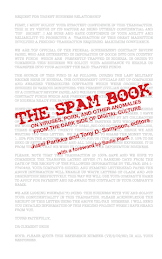The creation of a research institute is itself a media ecology – a flood of processes, negotiations, talks, emails, phone calls and such; negotiations of people being placed and displaced, of belongings and outings. Who owns their heads, and their work time; true biopolitics of arranging things. Its what constitutes research in the current world: its mostly arranging stuff to such positions to be called research.
To call it multidisciplinary might be asking for it, but calling it transdisciplinary also risks falling between disciplines in a way that is not romanticized in any booklet on the need for interdisciplinary culture to sustain creative industries. The complexity of getting it working is , well, complex. To be “trans” is indeed risking it as any such huge system as higher education demands a fair amount of recognizability before it gives you necessary access and passage.
How to make it work? How to move on from a romantics of nomadism to a sustainability of movement as a strategy for research institutions? First of all, one needs to recognize that moving outside borders does not mean moving without some borders. Movement itself becomes constitutive of bordering, and tracking lines that were perhaps invisible before but nevertheless effective. This is what institutions are made of, in addition to the walls usually too ugly to be but ridiculed; patterns, habits, “the ways we do things.”
The movement can however become a bordering that is not creating rigid lines that want to stay there just to see the landscape change, but to sustain the dynamics of the energies put into that action. To see the movement reach its peak, and turn into something else. Institutions are not necessarily bad, but we have to envision such forms of institutions that suit our action. Its clear that not many of the old ones are up for the job.
Secondly, you talk in languages, and use languages to deterritorialize positions. You have to find again such passages and access, which you can use as vectors, not positions. Positioning is not what we need; we need vectors.
Thirdly, in the midst of such vectors, you need a minimum amount of identity. As said, things feed on recognizability, whether we want it or not. And for that, you launch numerous emails, actions, requests and meetings which produce logos, slogans, further patterns. Another media ecology.
Fourthly, you need routines. Patterns are mentioned as well, but it’s the routines that make up the borders and settings. Set up the dispositifs; the meetings, the schedules, the arrangement for temporal cycles to turn into action plans, or other ways to control time.
Fifth, fill in with anything considered necessary________________
Subscribe to:
Post Comments (Atom)








No comments:
Post a Comment